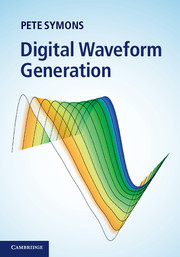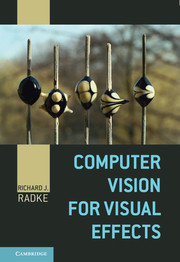Refine search
Actions for selected content:
526 results in Image processing and machine vision

Digital Waveform Generation
-
- Published online:
- 05 November 2013
- Print publication:
- 17 October 2013
Frontmatter
-
- Book:
- Digital Waveform Generation
- Published online:
- 05 November 2013
- Print publication:
- 17 October 2013, pp i-iv
-
- Chapter
- Export citation
Contents
-
- Book:
- Digital Waveform Generation
- Published online:
- 05 November 2013
- Print publication:
- 17 October 2013, pp v-x
-
- Chapter
- Export citation
Preface
-
- Book:
- Digital Waveform Generation
- Published online:
- 05 November 2013
- Print publication:
- 17 October 2013, pp xi-xv
-
- Chapter
- Export citation
Acknowledgements
-
- Book:
- Digital Waveform Generation
- Published online:
- 05 November 2013
- Print publication:
- 17 October 2013, pp xvi-xvi
-
- Chapter
- Export citation
Index
-
- Book:
- Digital Waveform Generation
- Published online:
- 05 November 2013
- Print publication:
- 17 October 2013, pp 341-345
-
- Chapter
- Export citation
2 - The foundations of digital waveform generation
-
- Book:
- Digital Waveform Generation
- Published online:
- 05 November 2013
- Print publication:
- 17 October 2013, pp 49-89
-
- Chapter
- Export citation
4 - DDS sine wave generation
-
- Book:
- Digital Waveform Generation
- Published online:
- 05 November 2013
- Print publication:
- 17 October 2013, pp 109-161
-
- Chapter
- Export citation
3 - Recursive sine wave oscillators
-
- Book:
- Digital Waveform Generation
- Published online:
- 05 November 2013
- Print publication:
- 17 October 2013, pp 90-108
-
- Chapter
- Export citation
6 - Dynamic waveshape and spectrum control
-
- Book:
- Digital Waveform Generation
- Published online:
- 05 November 2013
- Print publication:
- 17 October 2013, pp 228-248
-
- Chapter
- Export citation
7 - Phase domain processing – DDS and the IDFT
-
- Book:
- Digital Waveform Generation
- Published online:
- 05 November 2013
- Print publication:
- 17 October 2013, pp 249-265
-
- Chapter
- Export citation
1 - Introduction to waveform generation
-
- Book:
- Digital Waveform Generation
- Published online:
- 05 November 2013
- Print publication:
- 17 October 2013, pp 1-48
-
- Chapter
- Export citation
Glossary of terms
-
- Book:
- Digital Waveform Generation
- Published online:
- 05 November 2013
- Print publication:
- 17 October 2013, pp xvii-xviii
-
- Chapter
- Export citation
8 - Hardware implementation architectures
-
- Book:
- Digital Waveform Generation
- Published online:
- 05 November 2013
- Print publication:
- 17 October 2013, pp 266-306
-
- Chapter
- Export citation
9 - Digital to analogue conversion
-
- Book:
- Digital Waveform Generation
- Published online:
- 05 November 2013
- Print publication:
- 17 October 2013, pp 307-340
-
- Chapter
- Export citation
5 - DDS arbitrary waveform generation
-
- Book:
- Digital Waveform Generation
- Published online:
- 05 November 2013
- Print publication:
- 17 October 2013, pp 162-227
-
- Chapter
- Export citation

Computer Vision for Visual Effects
-
- Published online:
- 05 December 2012
- Print publication:
- 19 November 2012
8 - Three-Dimensional Data Acquisition
-
- Book:
- Computer Vision for Visual Effects
- Published online:
- 05 December 2012
- Print publication:
- 19 November 2012, pp 300-352
-
- Chapter
- Export citation
1 - Introduction
-
- Book:
- Computer Vision for Visual Effects
- Published online:
- 05 December 2012
- Print publication:
- 19 November 2012, pp 1-8
-
- Chapter
- Export citation
2 - Image Matting
-
- Book:
- Computer Vision for Visual Effects
- Published online:
- 05 December 2012
- Print publication:
- 19 November 2012, pp 9-54
-
- Chapter
- Export citation
